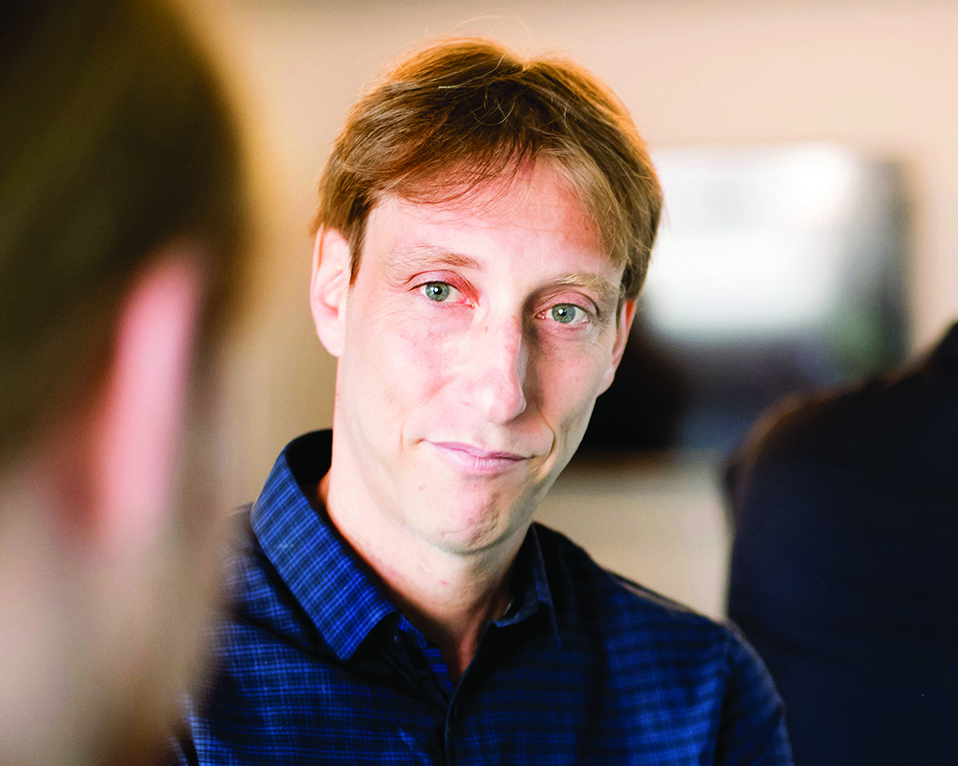Professor Ehud Altman received his Ph.D. from the Technion, Haifa in 2002. He was then a postdoctoral fellow at Harvard university for three years before joining the faculty of the Weizmann Institute of Science as a Yigal Alon fellow in 2005. He was promoted to the rank of Associate professor there in 2011. In 2010 he was awarded the young investigator prize from the Israel Physical Society and the Krill prize of the Wolf foundation. During the academic year 2012-2013 he was a Miller visiting professor at UC Berkeley. He joined the Physics department of UC Berkeley as a professor in the summer of 2016.
Research Interests
I am interested in condensed matter theory as well as many-body aspects of ultra-cold atomic systems and quantum information theory. Broadly speaking I investigate quantum matter, in which interactions and quantum entanglement between the particles can give rise to unexpected emergent properties. A recent focus of our research is how such emergent behavior unfolds in non equilibrium systems. For example we are trying to understand the phenomenon of many-body localization (MBL), and thermalization in quantum systems. To address these problems we use a variety of theoretical and numerical tools including field theory, strong disorder renormalization group, tensor networks, quantum Monte Carlo calculations as well as close collaboration with experimental groups. For a detailed description of recent and current research take a look at my group web page. Here is a brief account of selected topics.
Current projects:
Many-Body Localization and thermalization
A quantum many-body system evolving under its own intrinsic dynamics can be ergodic and thermalize or else it can many-body localize. MBL systems decoupled from an external environment are not able to serve as their own heat bath and therefore fail to reach thermal equilibrium. At a certain level MBL can be viewed as the extension of Anderson localization of a single quantum particle in a random potential to the case of a many-body system of interacting particles. Contrary to localization of single particles, there complex dynamics and production of long range entanglement takes place even in localized many-body systems. Much of my recent work has been devoted to understanding the nature of the dynamics in the MBL state, characterizing the phase transition between this state and an ergodic fluid and gaining insight into the process of thermalization in quantum systems. I also collaborate with experimental groups investigating these fascinating phenomena using systems of ultra-cold atoms.
Correlated states of driven systems
In recent years there has been substantial progress in experiments with many-body quantum systems strongly coupled to light. A case in point are fluids of exciton-polariton excitations of semiconductor quantum-wells in an optical cavity. Pumping with light to overcome photon loss, drives these many-body systems into a non-equilibrium steady state which we seek to understand. Can the driving give rise to new states of matter with emergent properties that would not be possible in thermal equilibrium? Do phase transitions exist in such systems, and if so how do we characterize them? Can quantum interference effects survive and dominate certain states of driven systems?
Ultra-cold quantum matter
Ultra-cold atomic systems offer an interesting new laboratory to study the organization of quantum matter at low temperatures. The unique aspects of these systems sometimes require us to critically revisit central concepts developed in the context of traditional materials, thus leading to new insights. For example, contrary to conventional condensed matter systems it is natural to have systems of strongly interacting bosonic particles and boson-fermion mixtures. This motivated us early on to predict novel topological states that are natural to cold atomic systems and cannot be understood in terms of non-interacting fermions.
Quantum materials
I am also interested in more traditional materials that show unexpected properties at low temperatures due to strong electronic correlations. Examples from my work include studies of the strange normal state of the high Tc cuprate superconductors and of the unconventional transport and magnetic properties of the two dimensional electron gas formed at the interface of oxide insulators.
Publications
Electrodynamic duality and vortex unbinding in driven-dissipative condensates G. Wachtel, L. M. Sieberer, S. Diehl, E. Altman, arXiv:1604.01042
J. Ruhman, E. Berg, and E. Altman, "Topological States in a One-Dimensional Fermi Gas with Attractive Interactions", Phys. Rev. Lett. 114, 100401 (2015).
R. Vosk, D. A. Huse, and E. Altman, "Theory of the many-body localization transition in one dimensional systems", Physical Review X 5 (3), 031032 (2015).
R. Vosk and E. Altman, "Many-Body Localization in One Dimension as a Dynamical Renormalization Group Fixed Point", Phys. Rev. Lett. 110, 067204 (2013).
E. Berg, E. Dalla Torre, T. Giamarchi, E. Altman, "Rise and fall of hidden string order of lattice bosons", Phys. Rev. B 77, 245119 (2008)
E. G. Dalla Torre, E. Berg, and E. Altman, "Hidden order in one dimensional Bose insulators", Phys. Rev. Lett. 97, 260401 (2006).
E. Altman, Y. Kafri, A. Polkovnikov and G. Refael, "Phase transition of one dimensional bosons with strong disorder", Phys. Rev. Lett. 93, 150402 (2004)
E. Altman, E. Demler and M. D. Lukin, "Probing many body correlations of ultra-cold atoms via noise correlations", Phys. Rev. A. 70, 013603 (2004).
More publications here.

